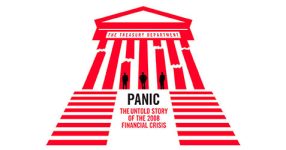Gothic art, as depicted in the documentary “Horror, Faith and Genius – Gothic Art”, skillfully manipulates emotions, weaving a lurid combination of horror and amazement. Despite originating 600 years ago, late medieval art remains surprisingly innovative, captivating viewers with its memorable imagery.
Gothic imagery, with its dark secrets, offers astonishing narratives once deciphered. Paintings like “The Last Judgment” by Stefan Lochner depict apocalyptic visions, with legions of the damned being dragged to hell while the blessed flood towards paradise. This portrayal not only showcases the terror of damnation but also serves as a moral warning to lead a righteous life.
Unveiling the Terrifying Realities of Hell
Stefan Lochner’s portrayal of hell exposes the torment faced by sinners, depicting devils and monsters dragging them towards damnation. Notably, individuals from all social classes, including the ruling elite, are depicted among the sinners, emphasizing the universality of sin’s consequences. The documentary highlights the visceral impact these images would have had on medieval audiences, urging them towards righteousness and moral conduct.
The Allure of Gothic Eroticism
While Gothic art often explores themes of horror and damnation, it also delves into the realm of eroticism. Rare depictions of erotic narratives in late medieval art, such as “The Magic of Love,” reveal a culturally formed eroticism that still resonates today. These artworks offer a glimpse into the complexities of desire and human emotion during the Middle Ages, challenging modern perceptions of medieval sensibilities.
Exploring the Origins of Gothic Art
The term “Gothic” was initially coined by Giorgio Vasari, who critiqued the architectural style prevalent in Northern Europe. However, Gothic art transcends Vasari’s initial judgment, encompassing a wide array of formats and subjects, from Christian narratives to profane themes. Despite originating primarily as cult objects within churches, Gothic artworks evolved into masterpieces valued for their artistic merit.
The Mastery of Late Gothic Artists
Late Gothic artists, such as Stefan Lochner and Martin Schongauer, demonstrated unparalleled mastery in their craft. Through techniques like copperplate engraving and oil painting, artists achieved new levels of realism, revolutionizing the perception of art. Works like the “Altarpiece of the Patron Saints of Cologne” showcase the fusion of artistic innovation with religious symbolism, leaving a lasting impact on viewers.
Transition and Innovation in Late Gothic Art
The late Middle Ages witnessed a transition towards more realistic depictions, blurring the lines between idealized imagery and portraiture. Artists like Lucas Moser pushed the boundaries of traditional art, incorporating elements of realism and emotional expression. Late Gothic art’s ability to capture the complexities of human experience amidst evolving societal dynamics remains a testament to its enduring relevance.
Late Gothic Art as a Reflection of Human Experience
The documentary “Horror, Faith and Genius – Gothic Art” provides a comprehensive exploration of late medieval art’s enduring allure. Through its examination of themes like horror, eroticism, and religious devotion, the documentary illuminates the profound impact of Gothic art on both medieval and contemporary audiences. As a reflection of human experience, Gothic art continues to captivate and inspire, transcending the boundaries of time and culture.












